Sea stars, often called starfish, are among the most iconic inhabitants of the oceans. Belonging to the class Asteroidea, they are related to sea urchins and sea cucumbers. There are over 1,900 known species worldwide, living from shallow tropical lagoons to the deepest parts of the ocean. While most species have five arms, some can have more than twenty, and their sizes range from just a few centimeters to more than a meter across. Their rigid skeleton made of calcareous plates gives them their characteristic star-shaped appearance, while tube feet located on the underside of their arms allow them to move gracefully across the reef.
One of the most fascinating aspects of sea stars is their way of feeding. They are carnivorous and use a unique method: everting their stomach out of their mouth to digest prey externally, often bivalves like clams and mussels. Sea stars are also masters of regeneration—if they lose an arm, they can grow it back, and in some cases, an entire new sea star can regenerate from a single arm. This remarkable resilience, combined with their ecological role in controlling populations of other reef organisms, makes them essential members of marine ecosystems.
The Most Beautiful Sea Stars in Mauritius
Fromia milleporella – The Red Sea Star
Recognizable by its vivid red color, Fromia milleporella is one of the most photographed sea stars. Commonly found on reef slopes and sandy bottoms, it adds a splash of color to the reef.
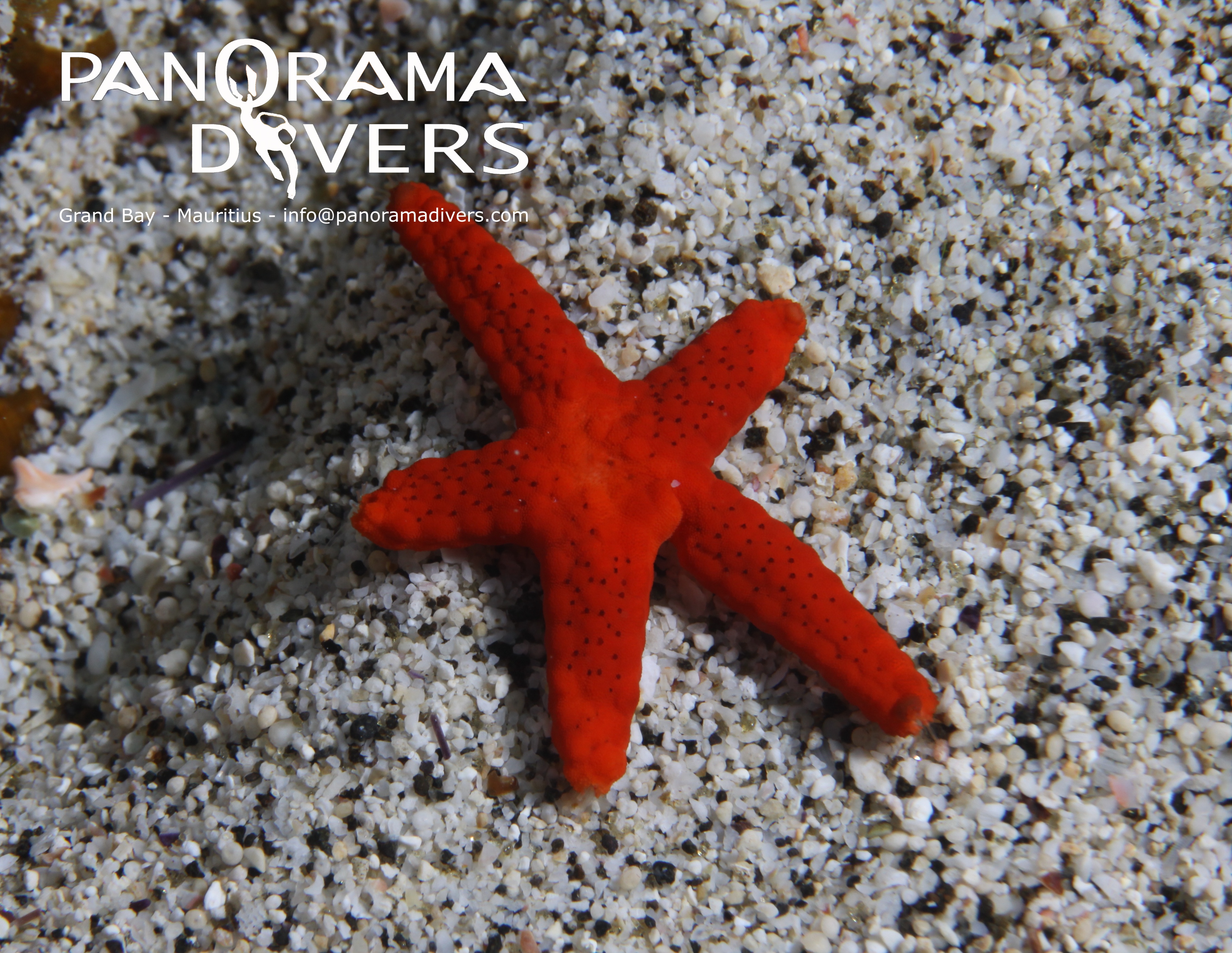
Fromia monilis – The Necklace Sea Star
This species gets its name from the white or pale patches that look like beads on its arms. It’s a favorite among underwater photographers for its striking patterns.
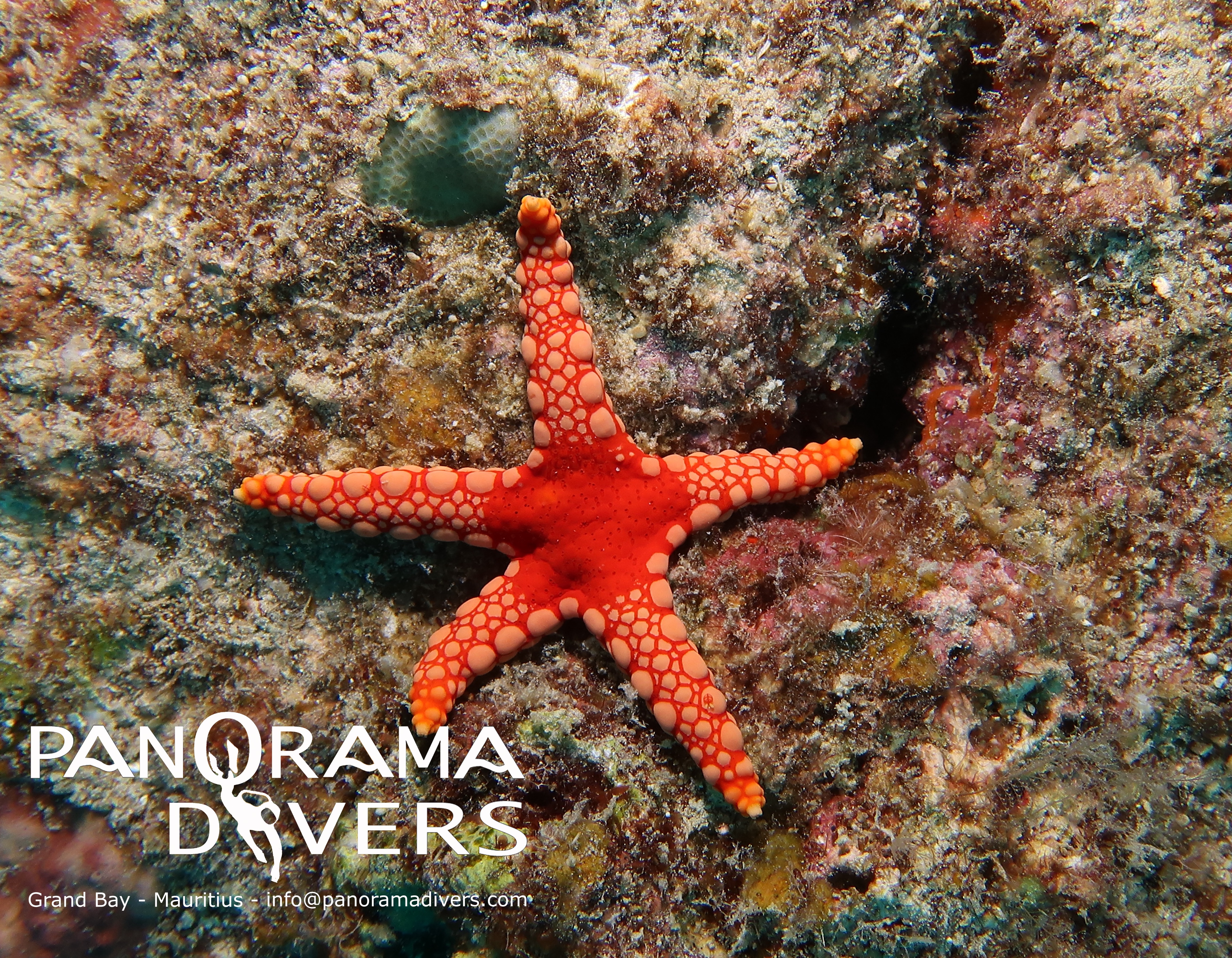
Archaster angulatus – The Sand-Sifting Sea Star
A master of disguise, Archaster angulatus often buries itself in sandy bottoms. It plays a key role in the ecosystem by aerating the sand and feeding on detritus.
Gomophia egyptiaca – The Egyptian Sea Star
With its thick, knobby arms and striking patterns, Gomophia egyptiaca is a distinctive sea star often spotted on coral reefs. Typically found crawling over hard substrates in search of food, it brings a unique texture and character to the reefscape.
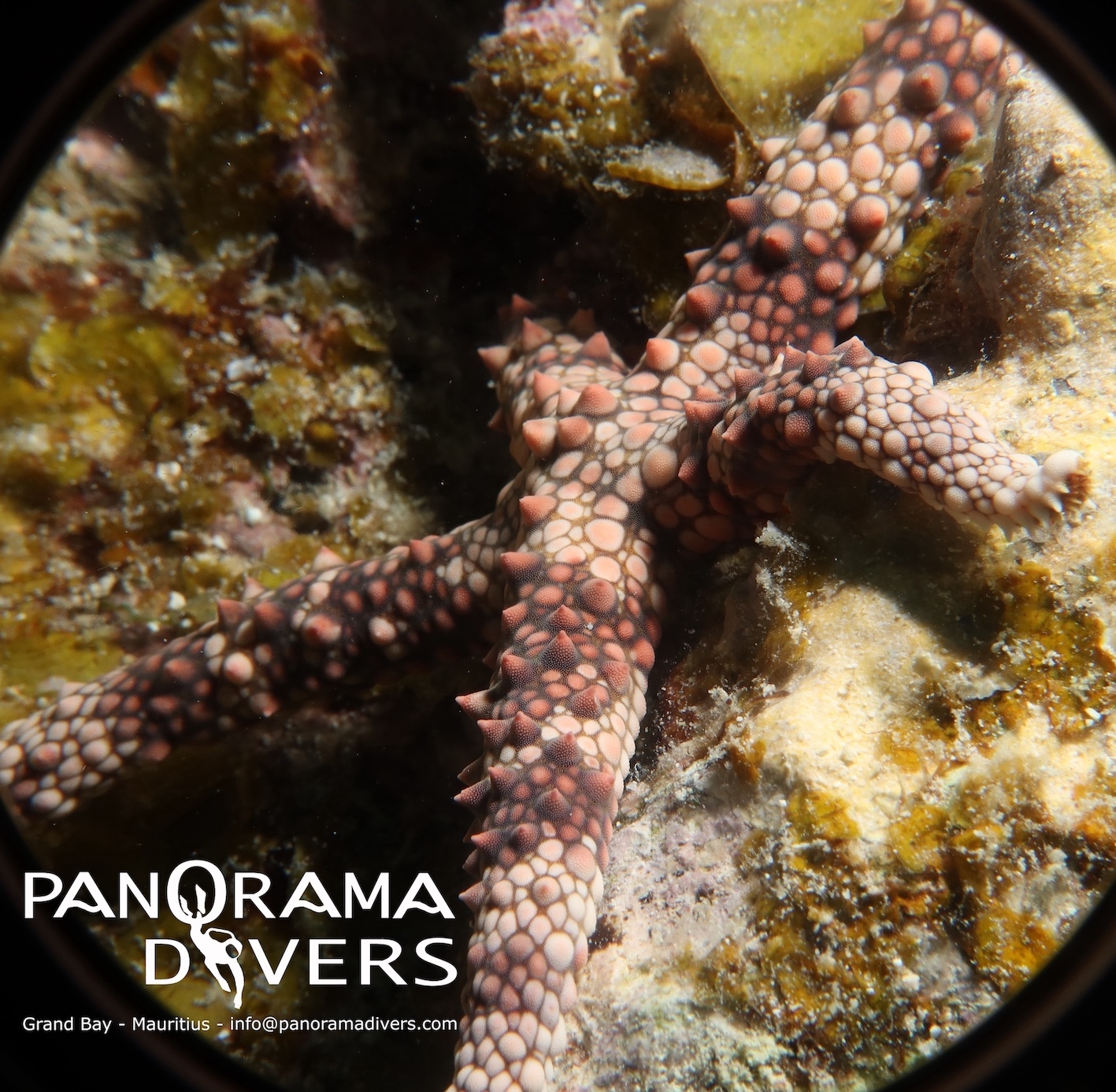
Leiaster sp. – The Long Arms Sea Star
Not as common, Leiaster species are intriguing with their very long arms. They’re often spotted by divers exploring deeper reefs.

Nardoa variolata – The Mosaic Sea Star
With its distinctive knobby surface and mosaic-like patterns, Nardoa variolata is easy to recognize. This species often lives on rocky substrates.
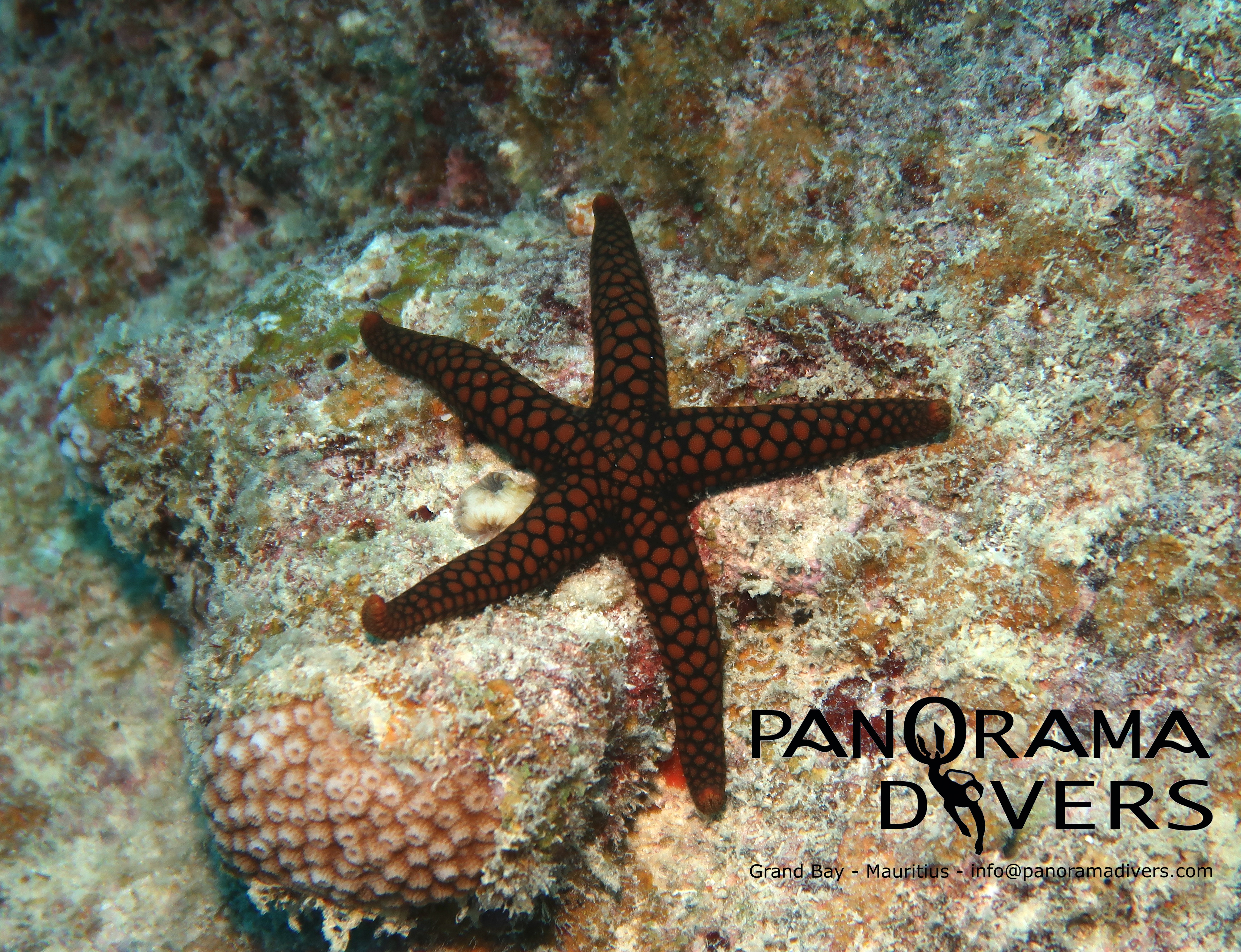
Ferdina flavescens – The Yellow-Tinged Sea Star
Rare and delicate-looking, this species displays pale tones often highlighted with yellow. A special find for divers who love unusual encounters.
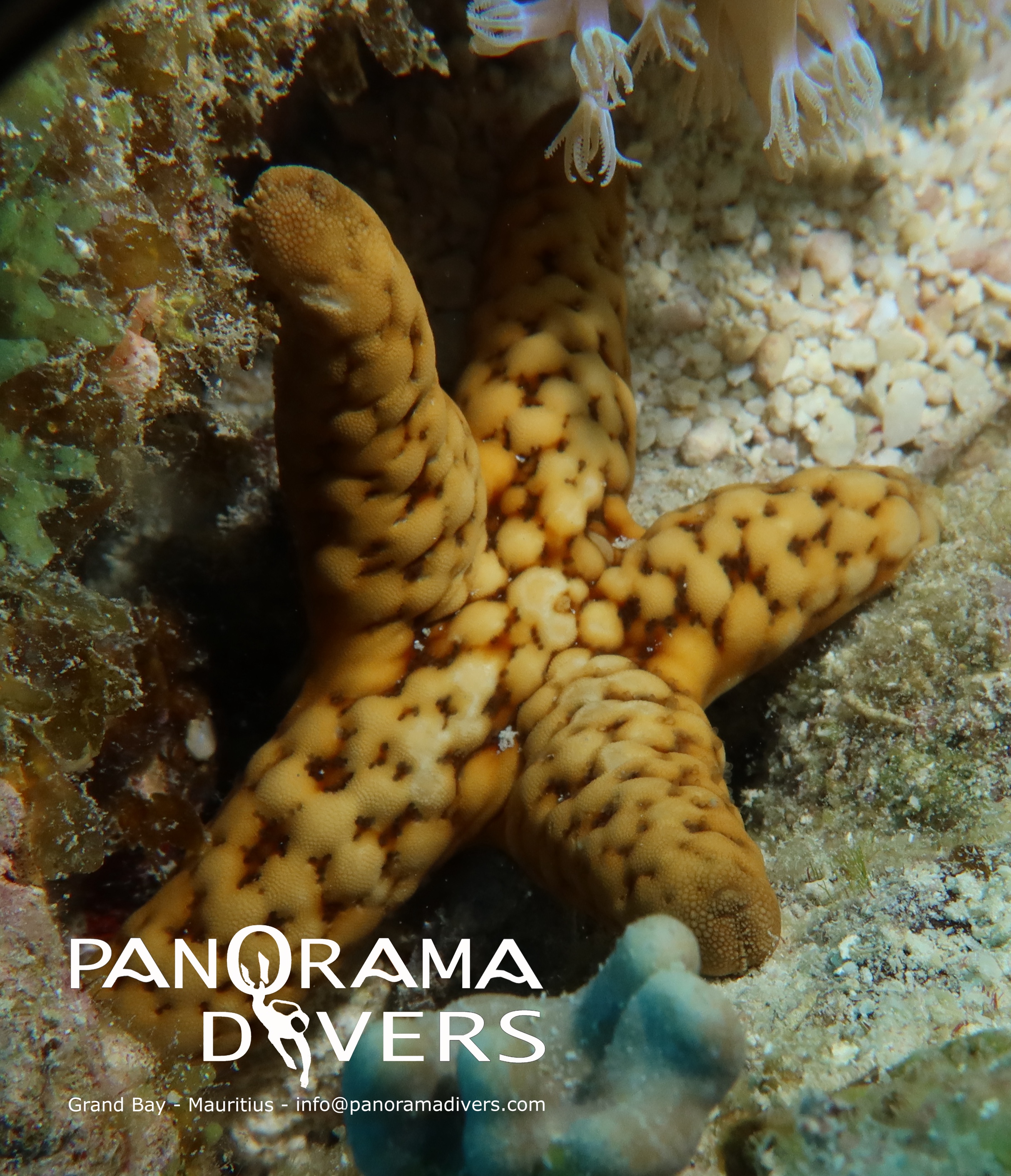
Mithrodia clavigera – The Clubbed Sea Star
This large and robust sea star is covered with thick, club-like projections, giving it a very armored appearance. A true giant of the reefs.
Linckia multifora – The Regenerating Sea Star
Perhaps the most fascinating, Linckia multifora has an incredible ability to regenerate lost arms. Divers often encounter individuals with uneven arm lengths, a sign of regrowth.
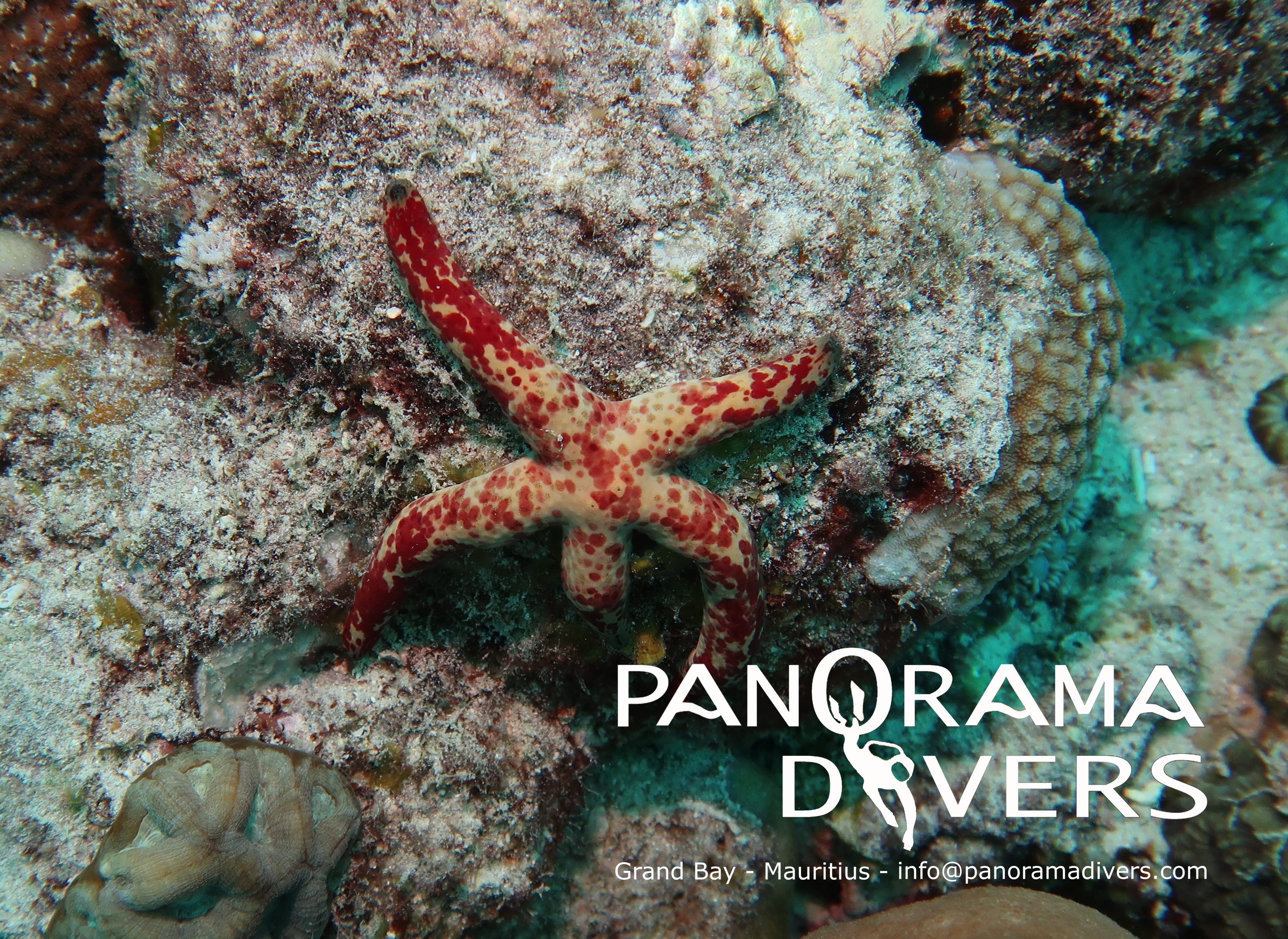
Culcita schmideliana – The Cushion Star
Round and plump, this species looks like a colorful underwater cushion. Its size and shape make it easy to spot, even for snorkelers.
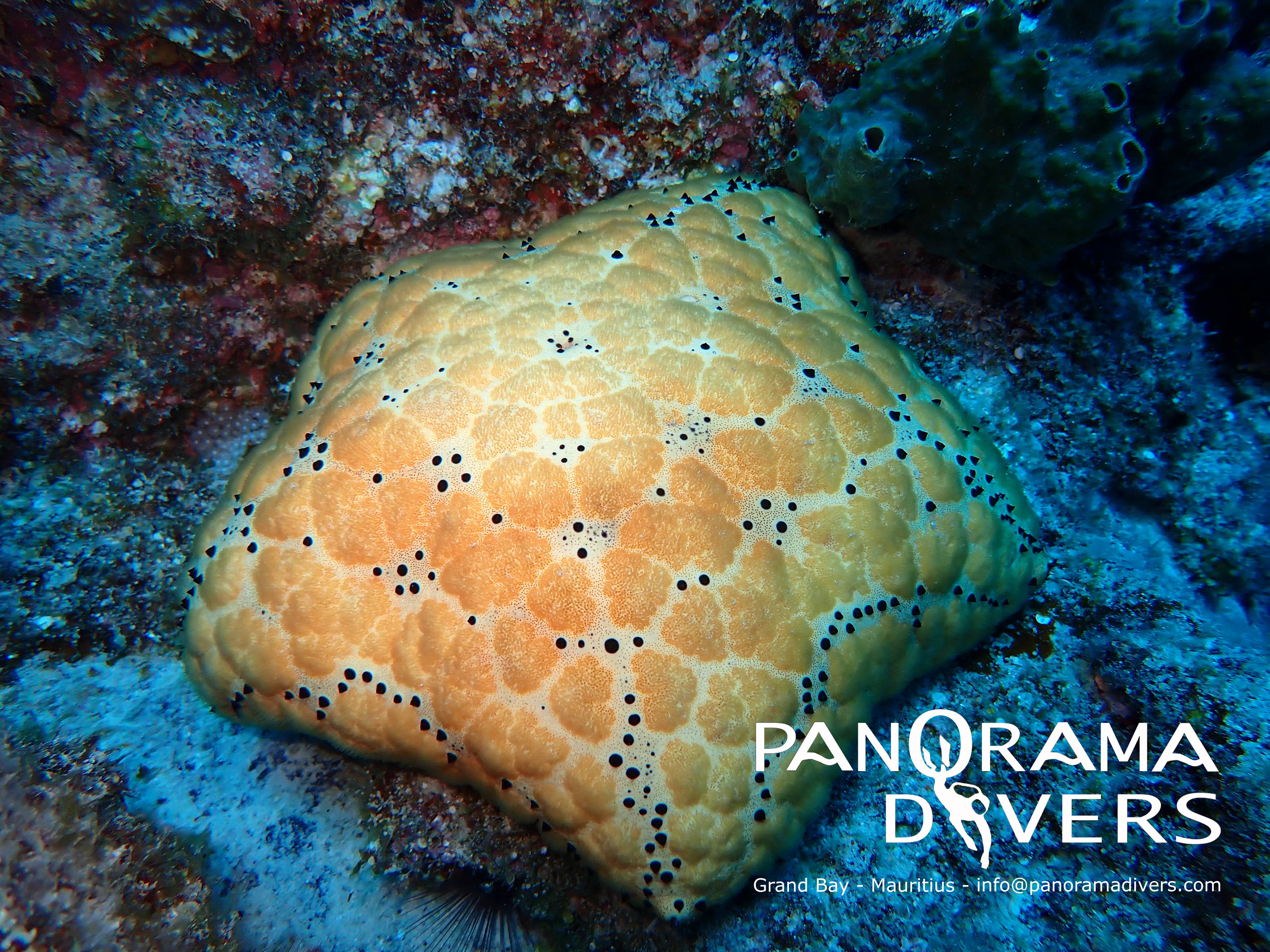
Acanthaster planci – The Crown-of-Thorns Sea Star
Beautiful but dangerous, this large, spiny sea star preys on corals. In high numbers, it can damage reefs, but in balanced populations, it plays a role in reef dynamics.
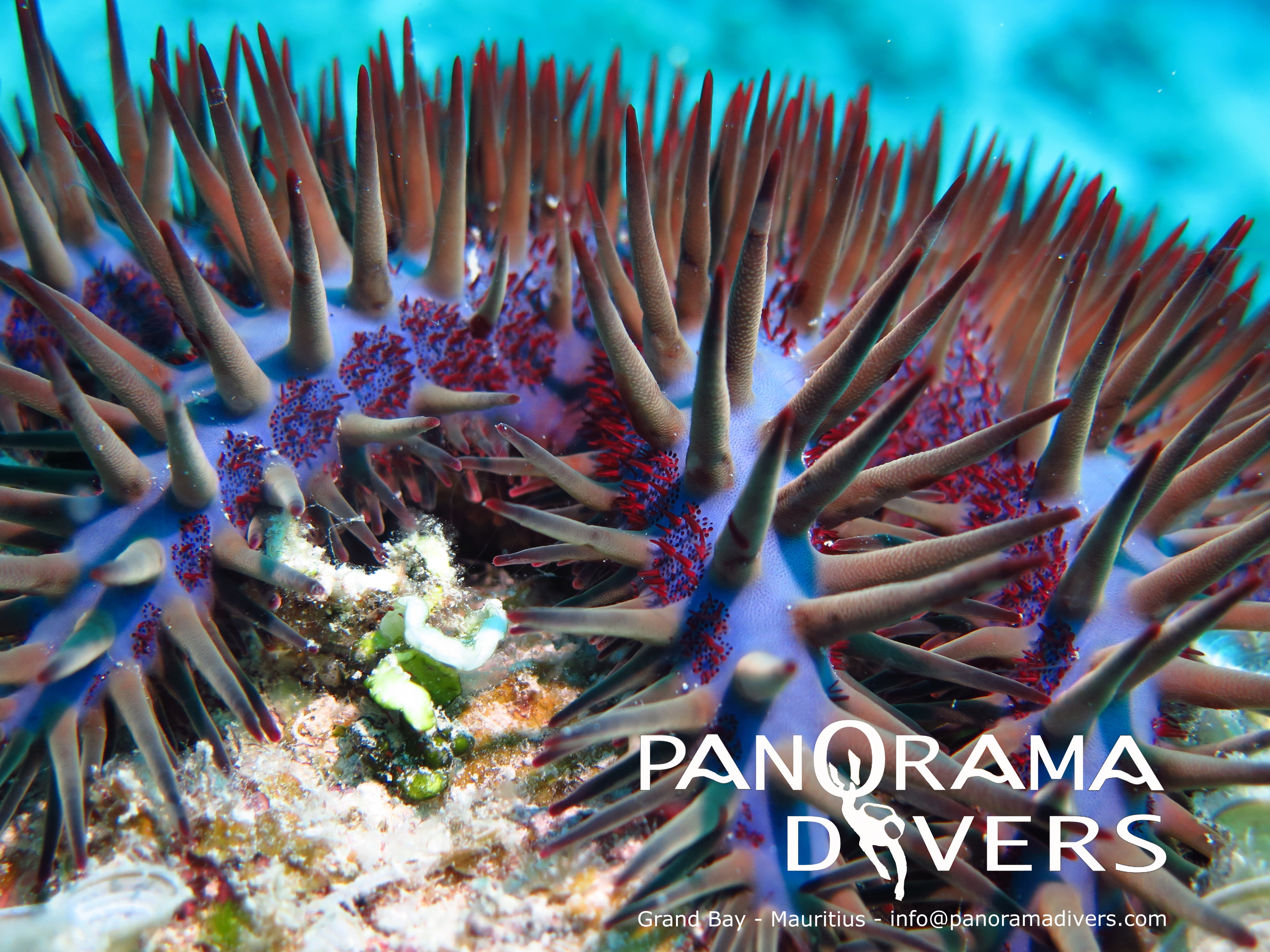
Why Sea Stars Matter for Divers
Sea stars are more than just beautiful creatures—they’re essential to reef health. Some clean the sand, others control coral growth, and many provide food for fish. Observing them during a dive adds another layer of wonder to Mauritius’ already rich underwater world.













